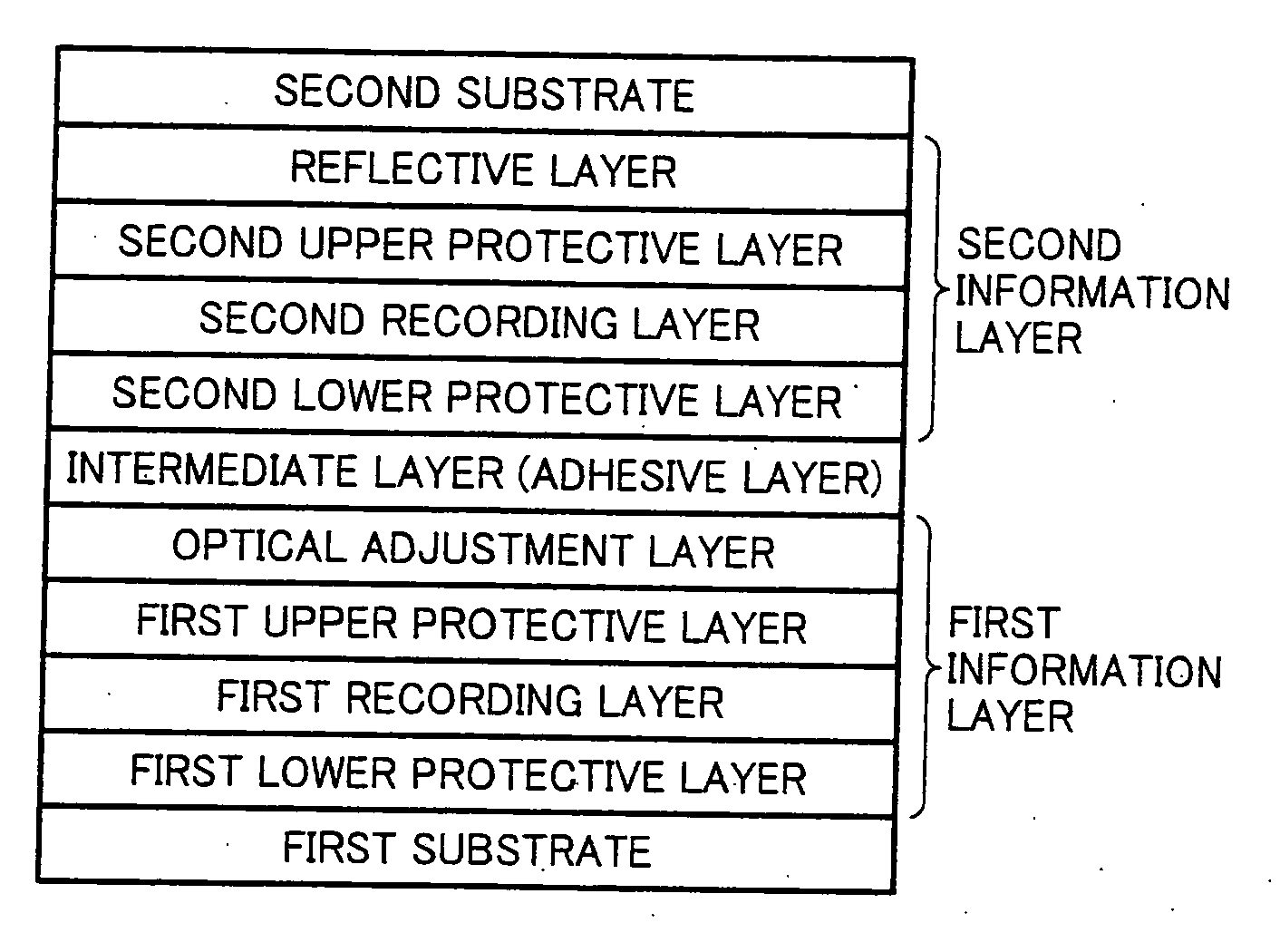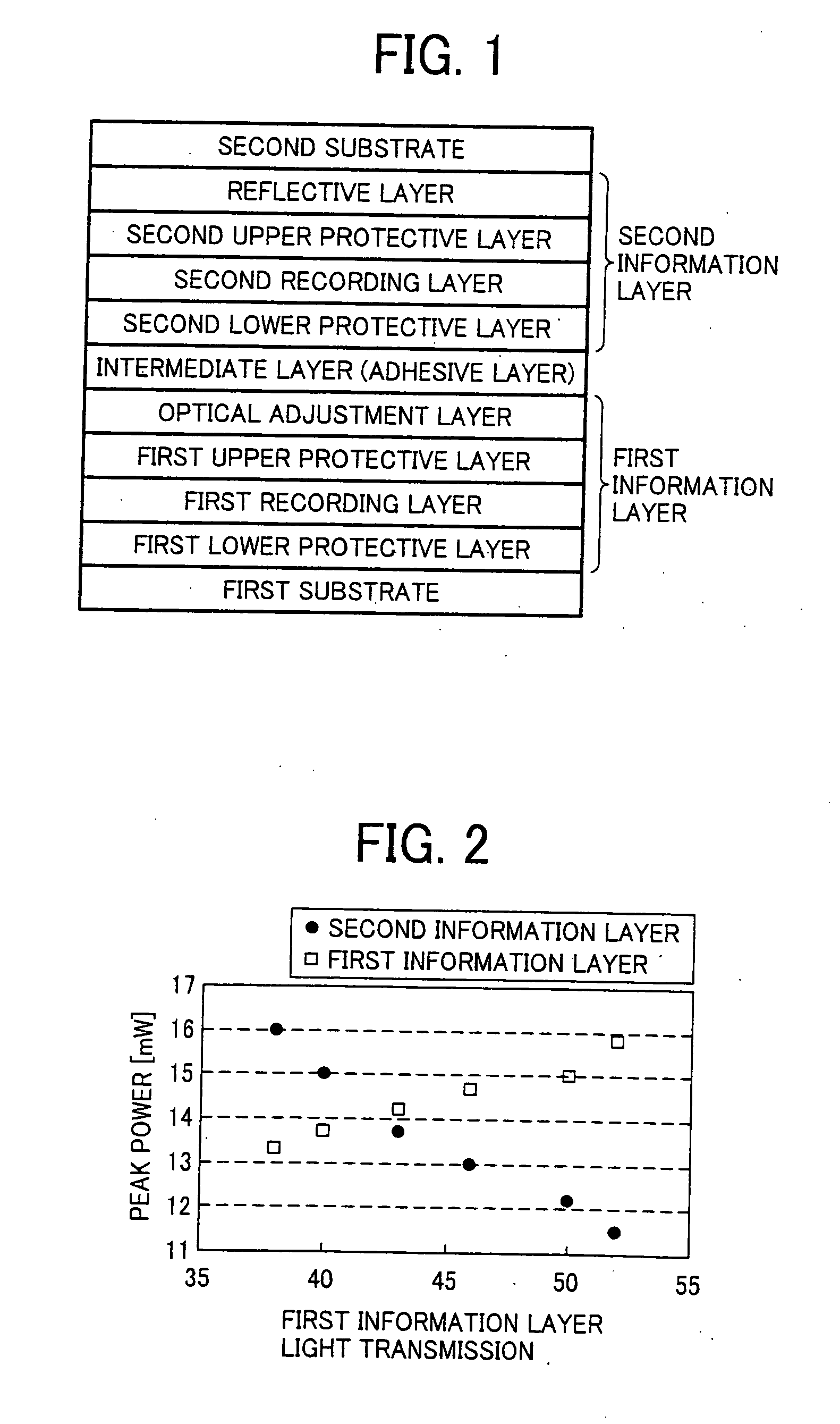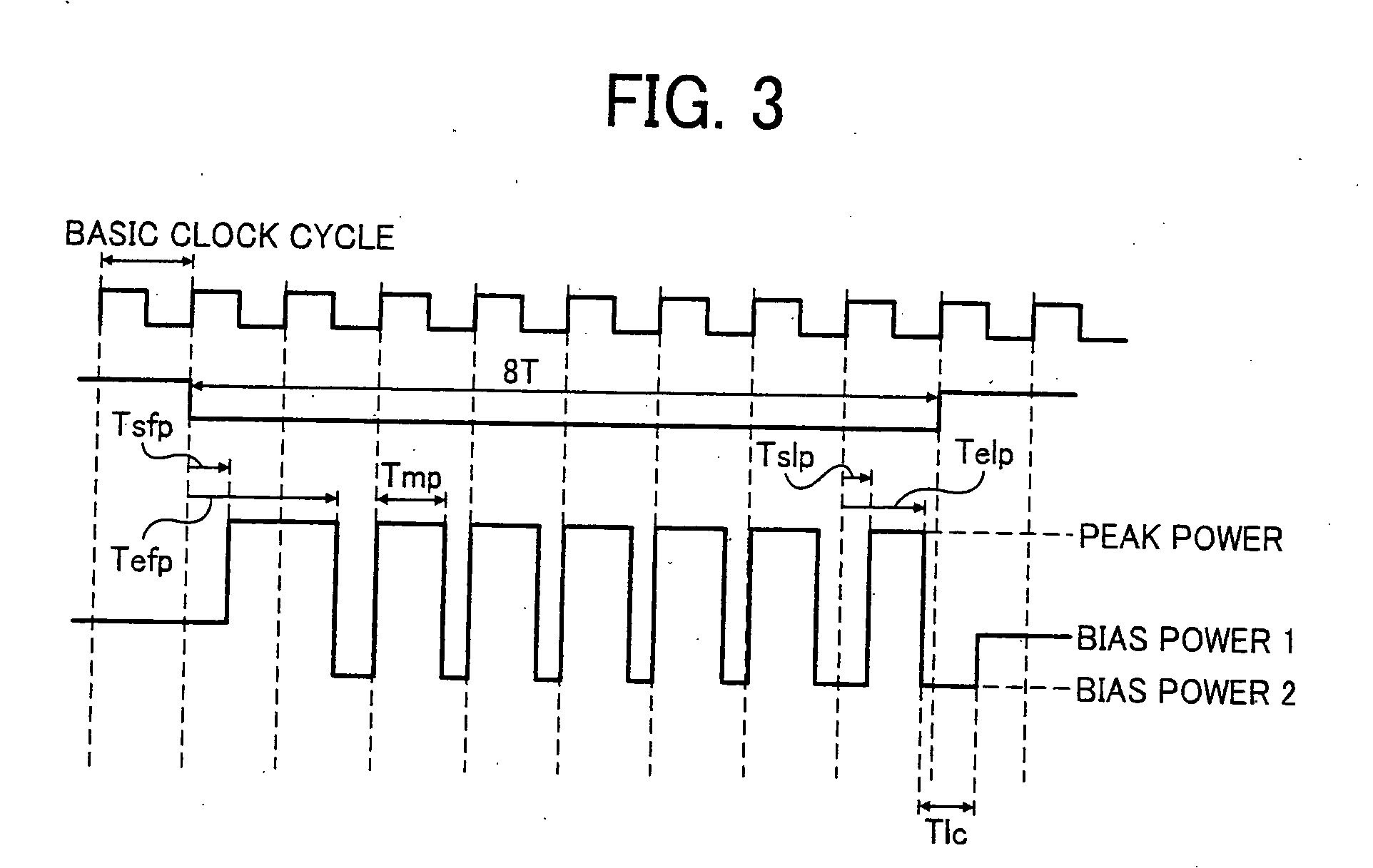Optical recording medium
- Summary
- Abstract
- Description
- Claims
- Application Information
AI Technical Summary
Benefits of technology
Problems solved by technology
Method used
Image
Examples
example 1
[0107]On a first substrate formed of a polycarbonate resin which has a diameter of 12 cm, a thickness of 0.59 mm, and a continuous wobbling groove for tracking guide having a track pitch of 0.4 μm with a depth of 30 nm on one side, a first lower protective layer of a mixture of ZnS and SiO2 with a molar ratio (%) of 80:20 having a thickness of 50 nm is formed by an RF magnetron sputtering method with a sputtering power of 4 kW in an Ar flowing rate of 15 sccm.
[0108]Next, with a sputtering power of 0.8 kW in an Ar flowing rate of 15 sccm, a first recording layer having a thickness of 7.5 nm is formed by an RF magnetron sputtering method using a Bi2O3 target.
[0109]Next, with a sputtering power of 4 kW in an Ar flowing rate of 15 scam, a first upper protective layer of a mixture of ZnS and SiO2 with a molar ratio (%) of 80:20 having a thickness of 20 nm is formed by an RF magnetron sputtering method.
[0110]Next, with a sputtering power of 2 kW in an Ar flowing rate of 15 sccm, an optica...
examples 8 to 14
[0121]The WORM optical recording media having two information layers of Examples 8 to 14 are manufactured in the same manner as in Examples 1 to 7 except that an Al2O3 layer having a layer thickness of 10 nm is formed between the first substrate and the first lower protective layer.
[0122]PRSNR is measured for the WORM optical recording media. The results are that PRSNR of Examples 8 to 14 increases by 4 to 6 in comparison with that of Examples 1 to 7.
example 15
[0123]On a first substrate formed of a polycarbonate resin which has a diameter of 12 cm, a thickness of 0.59 mm, and a continuous wobbling groove for tracking guide having a track pitch of 0.4 μm with a depth of 30 nm on one side, a first lower protective layer of a mixture of ZnS and SiO2 with a molar ratio (%) of 80:20 having a thickness of 50 nm is formed by an RF magnetron sputtering method with a sputtering power of 4 kW in an Ar flowing rate of 15 sccm.
[0124]Next, with a sputtering power of 0.8 kW in an Ar flowing rate of 15 sccm, a first recording layer having a thickness of 7.5 nm is formed by an RF magnetron sputtering method using a target having the composition ratio shown in Table 2. The results (absorption index k and refraction index n of each material for the recording layers measured by spectroscopic ellipsometer are shown in Table 2.
[0125]Next, with a sputtering power of 4 kW in an Ar flowing rate of 15 sccm, a first upper protective layer of a mixture of ZnS and S...
PUM
 Login to View More
Login to View More Abstract
Description
Claims
Application Information
 Login to View More
Login to View More - R&D
- Intellectual Property
- Life Sciences
- Materials
- Tech Scout
- Unparalleled Data Quality
- Higher Quality Content
- 60% Fewer Hallucinations
Browse by: Latest US Patents, China's latest patents, Technical Efficacy Thesaurus, Application Domain, Technology Topic, Popular Technical Reports.
© 2025 PatSnap. All rights reserved.Legal|Privacy policy|Modern Slavery Act Transparency Statement|Sitemap|About US| Contact US: help@patsnap.com



